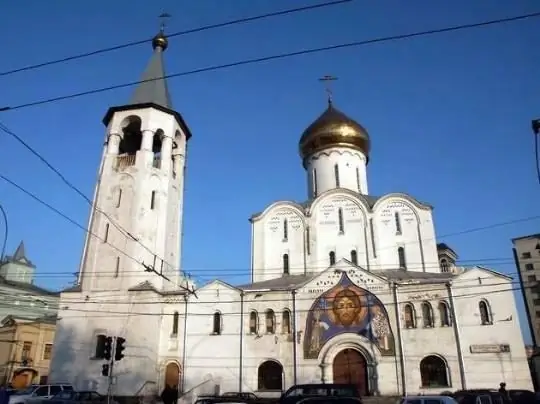
Description of the attraction
The Old Believers Church of St. Nicholas the Wonderworker at Tverskaya Zastava was built on the site of a wooden chapel on the square of Tverskaya Zastava. Its construction began in 1914. The first project of the church in 1908 was carried out by the architect I. Kondratenko. The customer of the project was I. Rakhmanov, an old-believer merchant. The project was approved by the city authorities, but for unknown reasons the construction was postponed.
Six years later, another project was completed. The author was the architect A. Gurzhienko. The temple was built in the style of early Novgorod architecture. Due to the fact that the outlines of the church completely coincide with the initial project of Kondratenko, it was concluded that the zero cycle of the initial project was completed.
The church vaguely resembles the famous Church of the Savior on Nereditsa, only pillarless inside. The hipped bell tower of the temple also resembles the Novgorod belfries.
The construction of the temple coincided with the First World War. The construction was financed by A. Rusakov and P. Ivanov. Through the efforts of the community of Old Believers, the temple was built. In 1921 the temple was consecrated. It was active for a short time, only 20 years. In 1941, at the beginning of the Great Patriotic War, the temple was closed. It housed an anti-aircraft defense warehouse. After the war, there was a workshop of the sculptor S. Orlov in the temple. Here he created the famous sculpture of Yuri Dolgorukov. Then in the church there was a workshop of the art and production plant named after I. Vuchetich. In 1989, the workshop was taken out, and they expected to open a concert hall in the church. Fortunately for the believers, this did not happen.
In 1993, the temple was transferred to the Old Believer Metropolis. Restoration work began in the temple. In the church, electricity is used only in the back rooms, and during the service, lamps and candles are lit. There are no ancient icons in the church, the oldest icon of Saints Zosima and Savvaty belongs to the 19th century, but was written on the basis of the 17th century.
The first prayer service in the church was held on August 2, 1995.






